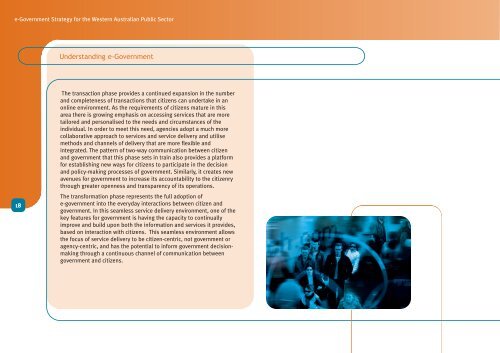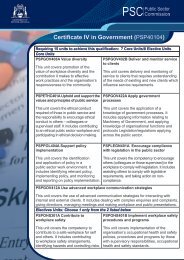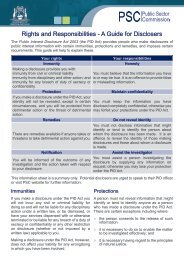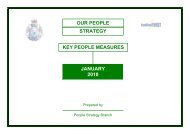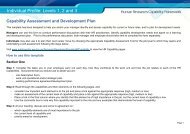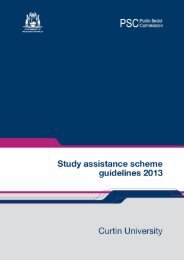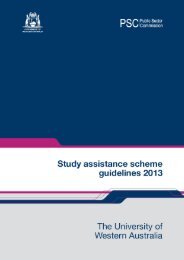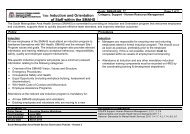Archived document - Public Sector Commission - The Western ...
Archived document - Public Sector Commission - The Western ...
Archived document - Public Sector Commission - The Western ...
You also want an ePaper? Increase the reach of your titles
YUMPU automatically turns print PDFs into web optimized ePapers that Google loves.
e-Government Strategy for the <strong>Western</strong> Australian <strong>Public</strong> <strong>Sector</strong><br />
Understanding e-Government<br />
18<br />
<strong>The</strong> transaction phase provides a continued expansion in the number<br />
and completeness of transactions that citizens can undertake in an<br />
online environment. As the requirements of citizens mature in this<br />
area there is growing emphasis on accessing services that are more<br />
tailored and personalised to the needs and circumstances of the<br />
individual. In order to meet this need, agencies adopt a much more<br />
collaborative approach to services and service delivery and utilise<br />
methods and channels of delivery that are more flexible and<br />
integrated. <strong>The</strong> pattern of two-way communication between citizen<br />
and government that this phase sets in train also provides a platform<br />
for establishing new ways for citizens to participate in the decision<br />
and policy-making processes of government. Similarly, it creates new<br />
avenues for government to increase its accountability to the citizenry<br />
through greater openness and transparency of its operations.<br />
<strong>The</strong> transformation phase represents the full adoption of<br />
e-government into the everyday interactions between citizen and<br />
government. In this seamless service delivery environment, one of the<br />
key features for government is having the capacity to continually<br />
improve and build upon both the information and services it provides,<br />
based on interaction with citizens. This seamless environment allows<br />
the focus of service delivery to be citizen-centric, not government or<br />
agency-centric, and has the potential to inform government decisionmaking<br />
through a continuous channel of communication between<br />
government and citizens.


